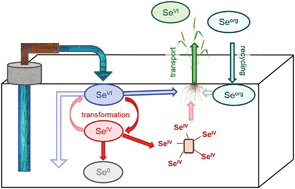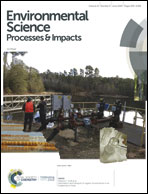The behaviour of irrigation induced Se in the groundwater-soil-plant system in Punjab, India†
Abstract
Selenium is of special interest in different research fields due to its narrow range between beneficial and toxic effects. On a global scale, Se deficiency is more widespread. Biofortification measures have successfully been applied to specifically increase Se concentrations in food crops. Still not much is known about the behaviour and long-term fate of externally supplied Se. Over many years, natural but external selenate is regularly introduced into the soil-plant system via irrigation at our study sites in Punjab which makes it also an ideal natural analogue to investigate the long term effect of biofortification. For our study, we combined total and species specific analysis of Se in soil and plant material. Selenium is clearly enriched in all investigated topsoils (0–15 cm) with concentrations of 1.5–13.0 mg kg−1 despite similar background Se concentrations (0.5 ± 0.1 mg kg−1) below 15 cm depth. Irrigation is indicated to be the primary source of excess Se. Processes like Se species transformation, uptake by plants and plant material decomposition further influence both the Se speciation and extent of Se enrichment in the soils. The Se concentration in different plants and plant parts is alarmingly high showing concentrations of up to 738 mg kg−1 in wheat. Irrigation induced selenate can be considered as an easily available short term pool of Se for plants and thus strongly controls their total Se concentration and speciation. The long-term pool of Se in the topsoil mainly consists of selenite and organic Se species. These species are readily retained but still sufficiently mobile to be taken up by plants. The formation of elemental Se can be considered as a non-available Se pool and is thus, the major cause of Se immobilization and long-term enrichment of Se in the soils. Our study clearly shows that biofortification with selenate, despite its effectiveness, bears the risk of easily increasing Se levels in plants to toxic levels and producing food with less favourable inorganic Se species if not done with care. Excess selenate is either lost due to biomethylation or immobilized within the soil which has to be considered as highly negative from both an economic and ecological point of few.



 Please wait while we load your content...
Please wait while we load your content...